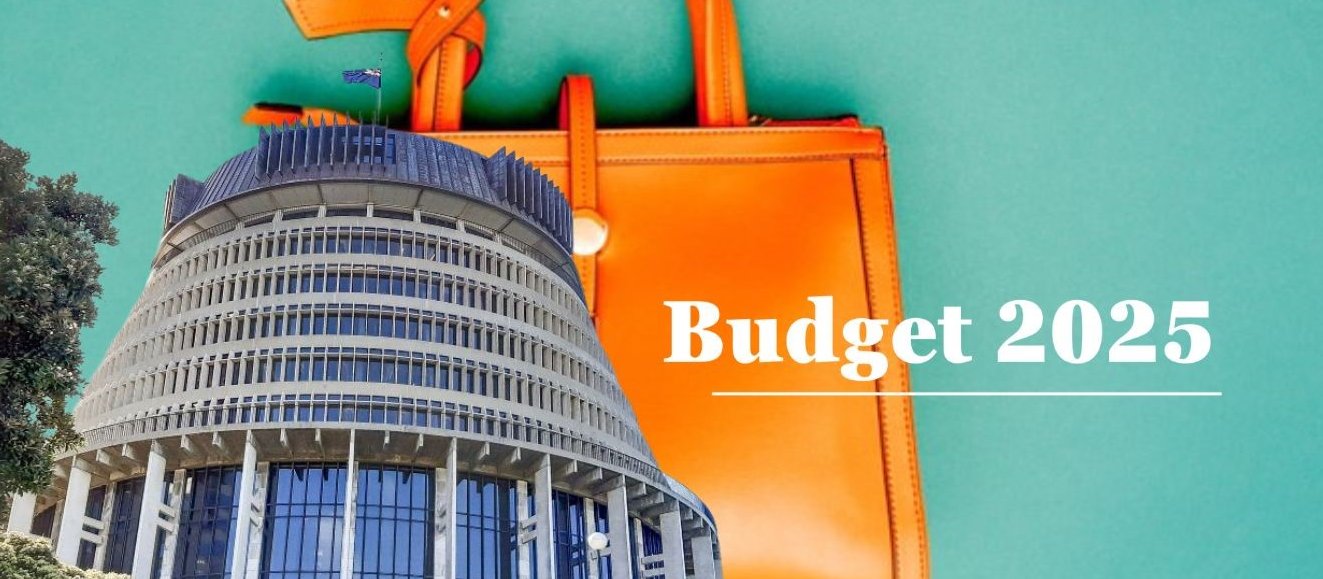Otolaryngologist, head and neck surgeon Francis T. Hall discusses the evaluation of thyroid nodules, which primarily aims to determine the likelihood of malignancy. He then reviews the treatment of thyroid nodules and thyroid cancer, including recent advances in management
Budget boosts Vote Health by 4.8 per cent; shift to 12-monthly scripts
Budget boosts Vote Health by 4.8 per cent; shift to 12-monthly scripts

Twelve-month prescriptions have been confirmed today in Budget 2025, in which Vote Health spending is planned to rise to $31.052 billion.
That’s up by 4.8 per cent on the $29.637 billion set out in Budget 2024 for this current financial year.
The operational spending from Vote Health for providing health services – which leaves out capital expenditure – is expected to be $28.063 billion, up by 7.4 per cent from Budget 2024.
New spending of more than $440 million over five years has been tagged for a range of primary care developments that have already been announced.
READ MORE
The share of Vote Health assigned for Health New Zealand Te Whatu Ora to deliver primary, community, public and population health services remains the same as for 2024, at 31 per cent, but the amount of money rises to $9.703 billion, from $9.088 billion.
Delivery of Te Whatu Ora hospital and specialist services, however, gets a slightly increased share: 51 per cent, up from 49 per cent. Pharmac’s slice is up too, at 6 per cent (from 5 per cent).
Te Whatu Ora will get $773 million for hauora Māori services, up from $749 million, but the share of Vote Health for this financial appropriation declines from 3 per cent, to 2 per cent.
Vote Health’s new initiatives have mostly already been announced, such as the package of primary care workforce, training and funding measures unveiled by health minister Simeon Brown in March; the planned 24/7 digital GP/NP consult service; increased funding for urgent and after-hours care; and the rural urgent care pilot programme.
Funding and projects announced by ministers today include:
- $91 million over four years for the change to 12-monthly prescriptions
- Commitments of more than $1 billion to hospital and other capital projects including in Wellington, Palmerston North and Nelson, along with increased “interim inpatient bed capacity”
- $24 million over four years to support timely transfer from acute hospitals to community settings, such as aged residential care facilities
- $240 million over four years for disabled people in residential care
- $28 million over four years to pay for the transition 111 mental health distress call responses from being police-led to being led by mental health services
- $1 million as a one-off for the HDC to support dealing with its backlog of outstanding complaints
- Savings of nearly $50 million over five years from cuts at the Ministry of Health, to support spending elsewhere
Budget 2025 continues the approach begun a year ago for pre-funding cost pressures from population growth and ageing, and wage and price increases. This approach is most recognisable in ministers’ frequent references to the $16.68 billion increase for health over three Budget cycles (six years). This year’s cost pressure funding increase is $1.37 billion or $5.48 billion over the four year “forecast period”.
Finance minister Nicola Willis’ document, Summary of Initiatives, includes a section headed “Primary Care – Delivering Quality and Timely Access”. It is about funding for the “primary care tactical action plan” – government-speak for the primary care initiatives announced by Mr Brown in March and subsequently.
“Alongside other activities, the funding will support a stronger focus on outcomes, earlier interventions and performance improvements within general practice,” the document says.
“Increased funding will retain doctors and nurses in primary care by increasing training capacity and clinical placements in primary care, incentivising recruitment, and increasing the uptake of advanced training. It will also introduce a new 24/7 digital primary care service, as well as strengthening access to urgent and after-hours care.”
The document says the health operational funding for Primary Care – Delivering Quality and Timely Access will be $101.616 million in 2025/26, plus $434,000 in tertiary education funding. In the five financial years starting with 2024/25, the health operational funding is $440.678 million, and $21.121 million is set aside for capital expenditure.
The end of funding for Comprehensive Primary Care Teams has been confirmed with no new spending in Budget 2025. The $35 million time-limited funding, introduced in Budget 2022, ended in 2024/25 and has not been renewed in Budget 2025. The initiative described as “tightly integrated primary care teams within locality provider networks” has been embraced by a number of providers, even in the absence of “locality provider networks”.
There is no mention of spending for a new medical school.
Speaking to journalists and analysts in the Budget “lock-up” today, where they can study embargoed documents prior to their 2pm release, Ms Willis restated her message that it is a “responsible” Budget.
Ms Willis says the operating allowance – for new spending – is, at $1.3 billion, the lowest allowance in a decade. That is a net figure which incorporates savings of $5.3 billion a year.
“A significant proportion of those savings come from changes to the pay equity regime,” Ms Willis says. She declined to get any further details of those savings when asked by journalists.
The minister pointed out the per capita spend per person in health in this year’s Budget is 6 per cent.
Of the total new spending in Budget 2025 - $6.678 billion - $1.783 billion or 27 per cent goes to health. Disability Support Services receive $255 million of 4 per cent.








![New Zealand Doctor Rata Aotearoa editor Barbara Fountain, RNZCGP president elect and Tauranga-based specialist GP Luke Bradford, Ministry of Health clinical chief advisor rural health Helen MacGregor, and Health New Zealand Te Whatu Ora clinical director primary and community care Sarah Clarke [Image: NZD]](/sites/default/files/styles/thumbnail_cropped_100/public/2025-05/1.%20Barbara%20Fountain%2C%20Luke%20Bradford%2C%20Helen%20MacGregor%20and%20Sarah%20Clarke.jpg?itok=091NETXI)
![Ngāti Porou Oranga specialist GP Elina Pekansaari and Te Nikau Hospital specialist in general practice and rural hospital medicine David Short [Image: NZD]](/sites/default/files/styles/thumbnail_cropped_100/public/2025-05/2.%20Elina%20Pekansaari%20and%20David%20Short.jpg?itok=h5XfSBVM)
![Locum specialist GP Margriet Dijkstra and OmniHealth regional operations manager (southern) Patricia Morais-Ross [Image: NZD]](/sites/default/files/styles/thumbnail_cropped_100/public/2025-05/3.%20Margriet%20Dijkstra%20and%20Patricia%20Morais-Ross.jpg?itok=jkrtRfJC)
![Golden Bay dairy farmer and dairy industry health and safety doctoral student Deborah Rhodes, and Golden Bay Community Health specialist GP Rachael Cowie [Image: NZD]](/sites/default/files/styles/thumbnail_cropped_100/public/2025-05/4.%20Deborah%20Rhodes%20and%20Rachael%20Cowie.jpg?itok=oM0_GcJc)
![Hauora Taiwhenua clinical director rural health Jeremy Webber, Australian College of Rural and Remote Medicine president Rod Martin and Observa Care director of business operations Deborah Martin, the wife of Dr Martin [Image: NZD]](/sites/default/files/styles/thumbnail_cropped_100/public/2025-05/5.%20Jeremy%20Webber%2C%20Rod%20Martin%20and%20Deborah%20Martin%2C%20the%20wife%20of%20Dr%20Martin.jpg?itok=P_aGmX_H)
![Spark Health chief executive John Macaskill-Smith and client director Bryan Bunz [Image: NZD]](/sites/default/files/styles/thumbnail_cropped_100/public/2025-05/6.%20John%20Macaskill-Smith%20and%20Bryan%20Bunz.jpg?itok=5yJvVZ0I)
![Associate dean (rural) Kyle Eggleton, third-year medical student Roselle Winter, and second-year pharmacy student Alina Khanal, all from the University of Auckland [Image: NZD]](/sites/default/files/styles/thumbnail_cropped_100/public/2025-05/7.%20Kyle%20Eggleton%2C%20Roselle%20Winter%20and%20Alina%20Khanal.jpg?itok=RQLd3TEs)
![Health New Zealand Te Whatu Ora clinical editor and specialist in general practice and rural hospital medicine Anu Shinnamon, and Whakarongorau chief clinical officer Ruth Large [Image: NZD]](/sites/default/files/styles/thumbnail_cropped_100/public/2025-05/8.%20Anu%20Shinnamon%20and%20Ruth%20Large.jpg?itok=i5TMswY9)
![Te Kahu Hauora Practice specialist GP Jane Laver and Ngāti Kahungunu ki Tāmaki-nui-a-Rua chief operations manager Tania Chamberlain [Image: NZD]](/sites/default/files/styles/thumbnail_cropped_100/public/2025-05/9.%20Jane%20Laver%20and%20Tania%20Chamberlain.jpg?itok=jtMklaCZ)